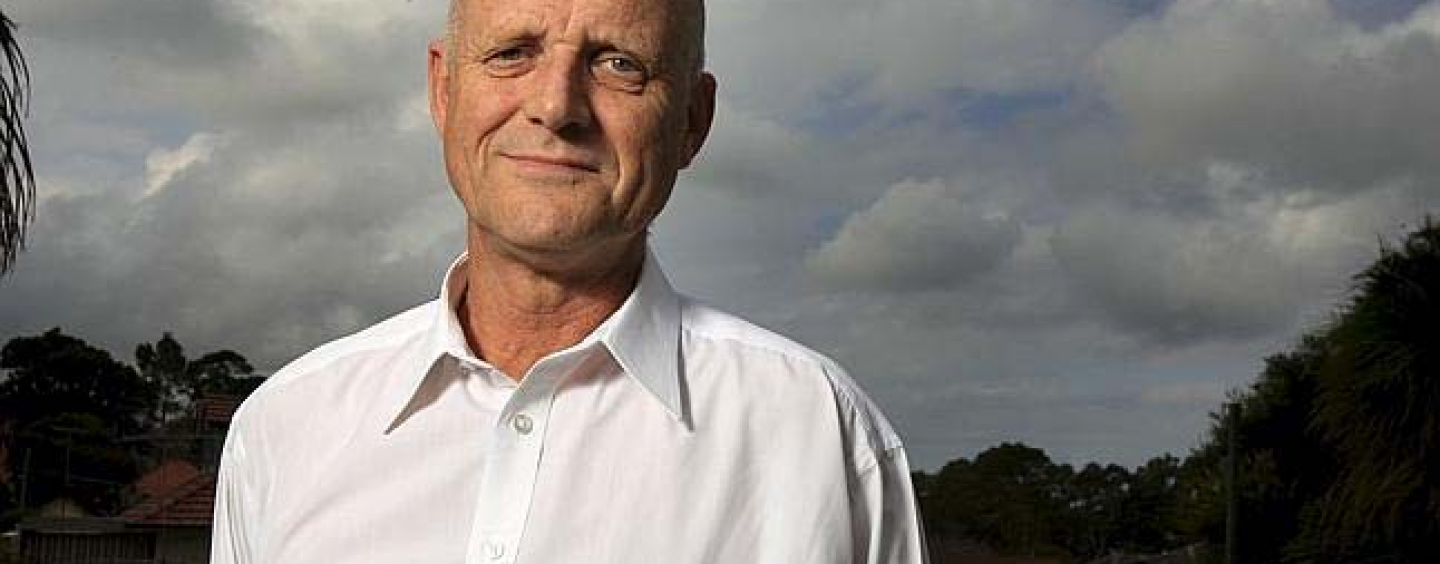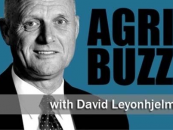The Liberal Democrats believe it is economically and morally incumbent upon the government to fix the budget problems today: David Leyonhjelm. Photo: James Alcock
The Coalition government will release its first budget on Tuesday which will set the tone for the rest of the time in office. There is speculation that the government will make some difficult decisions to get the budget back on track. I hope those predictions are correct, but I fear they will be wrong.
The commission of audit was a good start, but it didn’t go far enough in cutting back on government over-spending. Unfortunately, the government is probably going to water down the recommendations even further, announcing yet another budget deficit and (like Labor) making vague promises about a surplus somewhere in the future.
The budget should be in surplus in 2014-15 and that is what the Liberal Democrats’ proposed budget would achieve. Anything less should be considered failure. It is easy (and accurate) to blame our current budget problems on the waste of the previous government, but that does not mean the new government should shirk its responsibility.
The first budget of a new government speaks volumes about whether it is serious, and if the Liberal/National government does not make the tough decisions now, they never will.
It has become politically fashionable to deny that Australia is facing a budget problem. Opponents of reform correctly point out that Australia has less debt than the collapsing economies of Europe and America, and conclude that there is nothing to worry about. While it is true that Australia’s debt to GDP ratio is still relatively low by international standards, the economic denialists are neglecting three important points. First, debt is increasing far too quickly. It is noticeable that advocates for big government are only Keynesians on the way down (when recession equals budget deficit) but they refuse to follow their own rules and advocate a budget surplus when growth rates have recovered. Economic growth has followed long term trend for the last few years so by any standard (Keynesian, Classical, Austrian) we should not now have a budget deficit.
Second, the reason that countries fall into a debt crisis is because they did not take early action to combat rising debt. We are in the position now that many European countries were in a decade ago, and we need to decide whether we want to follow them into crisis or fix the problem. It does not take courage to bury your head in the sand and allow a budget crisis to slowly build.Third, even if the current debt and deficit was acceptable, the ageing population presents a real and serious danger to the Australian federal budget as the share of wage-earning taxpayers falls while the cost of health and pensions skyrockets. This is a long-term problem that must be addressed. The only options are to make some difficult reforms today, or leave the problems to the next generation when it will be even harder to fix.
No time to waste
The Liberal Democrats believe it is economically and morally incumbent upon the government to fix the budget problems today. Apologists for inaction will complain that reform is hard, and will use that as an excuse to neglect their responsibility and call themselves “compassionate”. In truth they are both cowardly and cruel in their disregard for future generations.
There are three steps necessary to bring the Australian economy back to health: (1) tax reform and deregulation to boost economic growth; (2) cut government over-spending to immediately bring the budget back to surplus and start paying down the national debt; and (3) structural reforms that ensures government spending is sustainable in the long run.
Structural reform will take a while to show up on the budget, but the consequences of our proposed tax and spending reforms are clear.
Compared with the 2013 Mid-Year Economic and Financial Outlook estimates for the 2014-15 budget, the LDP proposed budget provides a modest drop in tax revenue along with nearly $40 billion in spending cuts, so that the 2014-15 budget moves from a $33.9 billion deficit to a predicted $3.1 billion surplus. It can be done, and it should be done.
The current government has spoken at length about the need for economic reform, but has so far been silent on the two most obvious areas where reform would boost economic prosperity – income tax cuts and labour market deregulation.
Instead, the government is now considering income tax increases, which is not only contrary to previous undertakings but also economic folly since it will raise nearly no revenue while slowing the economy. Tax increases are a step in the wrong direction; we need income tax cuts.
Tax cuts must be linked with spending cuts. In Australia every year, nearly $200 billion is taken from workers and then given back to the same families in the form of government handouts or subsidies. This is wasteful, inefficient and unnecessary. Below I outline various ways to reduce middle class access to government handouts, but the quid pro quo of that must be income tax cuts so that productive people can keep the rewards of their hard work.
Not only will tax cuts reduce the wasteful tax-welfare churn, but lower income tax rates will encourage investment and innovation, reduce tax avoidance and boost economic growth, resulting in more jobs and higher wages for all Australians.
The top marginal tax rates in Australia exist mostly because of the politics of envy. It is well known that the top tax rate raises very little revenue while causing significant economic costs, and that the main reason it is retained is to pander to the tall poppy syndrome. We can no longer afford such petty indulgences if we wish to encourage our highly skilled people to direct themselves toward the productive economic service of others, and to reward those efforts. The top marginal tax rate (45 per cent) should be abolished, which would mean the second top rate (37 per cent) became the top rate. Going further, a top tax rate of 37 per
cent is still too high and causes significant economic damage. This should be cut down to 33 per cent.
Once we factor in the falsely named “Medicare levy” this would bring it to 35 per cent. While this is still too high, further cuts should perhaps wait until they can be part of more fundamental tax reform as budgetary circumstances improve.
These tax cuts will not change revenue by very much, since the lower rates will be offset with a larger tax base . Using mainstream estimates of the “elasticity of taxable income” and measures of income dispersion calculated from ATO statistics, the proposed reform will lead to a relatively modest loss of only $3 billion.
The full consequences of the tax changes are shown in the below chart.

While the revenue loss is small, the economic benefits are significant, with a GDP boost of over $17 billion in the short run (more than $6 billion in additional investment) and much more in the long run. Based on normal rates of philanthropic giving, the above changes will increase charity by about $250 million, which helps to build a more vibrant civil society.
Labour market reform
In addition to income tax cuts, the other key area of the economy needing reform is the labour market. It is a simple fact that over-regulation and high minimum wages force low skilled people out of work and into a life of welfare reliance and low self-esteem. Also, many minimum wage workers do not come from low-income families, making the minimum wage a poorly targeted way to help the poor.
Australia should have a one-year freeze on increases in the minimum wage (including youth wages). This is not unprecedented; the minimum wage freeze during the so-called “global financial crisis” was one of the key reasons unemployment stayed relatively low in Australia.
The relationship between the minimum wage and employment is measured by the “minimum wage elasticity of labour demand”, for which the best estimates in Australia comes from a study done by Andrew Leigh (now a Labor MP) in which he found an elasticity of minus 0.29. Using the estimates from Leigh and current inflation figures, it is simple to calculate that a minimum wage freeze would result in about 100,000 new jobs for low-skilled workers, reducing the unemployment rate from 6 per cent down to about 5.5 per cent (depending on participation rate changes).
While the economic benefits from more work and less welfare are significant, the social consequences of helping people avoid welfare dependence is a potentially larger (though unquantifiable) benefit. The main cause of poverty in Australia is unemployment and anybody who truly cares about combating poverty must celebrate any policy that helps people find a job.
Cutting marginal tax rates and helping to generate 100,000 new low-skilled jobs will result in a stronger economy with more investment and innovation, which will lead to real (and sustainable) wage increases in the medium to long run. More jobs and a growing economy are the only sustainable solution to poverty.Maintaining high taxes and high minimum wages are not acts of compassion; they are acts of economic vandalism done by people who like to say they “care” but don’t care enough to look at the consequences of policy.
Given the parlous state of our budget it would be irresponsible to promote tax cuts without also arguing for even stronger spending cuts. Beware any political salesperson that pretends they can provide everything you want.
There are many parts of the Australian budget that need reform, but in the short term it is necessary to target a handful of key changes that can be made quickly.
A 10 per cent across the board cut in salaries for all federal public servants and politicians would save more than $2 billion. Public service graduates now receive about $60,000 a year when they start. By the time they have worked for a few years many are on about $100,000 a year. The various layers of management regularly earn between $150,000 and $300,000 while top bureaucrats get up to $700,000 per year. Reducing all of these wages by 10 per cent would still leave politicians and public servants with a
very good salary.
Welfare spending
The biggest single cost for the government is direct welfare spending, in particular family payments and pensions. While some people like to complain about so-called “dole bludgers”, the truth is that unemployment allowances are relatively modest ($11 billion) compared with the cost of family payments ($36 billion) and assistance for the aged ($58 billion). In particular, family payments are often not well targeted and amount to middle-class welfare. Both the Centre for Independent Studies and the Commission of Audit suggested removing Family Tax Benefit (part B) and the Schoolkids Bonus, saving about $6 billion.
Pension reform is necessary, but this is not an area where costs can be decreased quickly. In the short term, the government should introduce a one-year freeze on all increases in welfare payments. This would save about $4 billion a year.
Also, some age pensioners are income poor but asset rich once you include the value of their house. So long as there is an appropriate assets threshold and the government ensures there is always access to a pension equivalent payment (through a reverse mortgage or similar), there is no reason why the family home should be excluded from the aged pension assets test. The Grattan Institute suggests that this change would save $5 billion per year.
In addition, while the 100,000 extra jobs created through labour market reform will not raise much income tax revenue since most of them will be low-paid, they will contribute to revenue through company tax,payroll tax, GST and other consumption taxes; and additional jobs will help reduce welfare payments. These savings should contribute another $2 billion to the budget bottom line.
There has been much discussion of co-payments for Medicare use. We believe it is something that should be brought in immediately. With a co-payment of as little as $5 a treatment, there would be a saving of at least $2 billion to the budget. The reason for a government Medicare system is to ensure that everybody can have access to health insurance. However, subsidising health insurance to high-income earners is a form of middle-class welfare, and high-income earners should contribute to their own basic health costs.
Means-testing Medicare can save an additional $6 billion a year and help to ensure that Medicare is sustainable into the future for those who really need it.
Government subsidies for higher education are a transfer from the lifetime poor to the lifetime rich. So long as there is a system to ensure that everybody can access further education (such as HECS) then there is no rationale for continued government subsidies for university. This subsidy should be immediately halved (saving $5 billion) in 2014-15 and then completely removed as soon as possible.
There are a series of activities where the federal government can make some immediate budget savings by scaling back on unnecessary activities.
Examples of corporate welfare include the Coal Sector Jobs Package, renewable energy spending, industry development assistance, agricultural assistance along with tourism and recreation projects. These can all be wound back or abolished, saving about $1 billion each (a total of $5 billion). Some modern corporate welfare is dressed up as research funding and justified by weak references to unproven and unlikely knowledge spillovers. This funding can be scaled back, saving another $2 billion. There is no good reason for the government to continue provide subsidised television stations. The ABC and SBS can continue as self-financing operations or they can be sold, and either option will save the budget at least $1 billion.
Our proposed changes need to be made immediately to strengthen the economy and balance the budget, but more fundamental changes are needed.
The proposed income tax cuts will help to boost growth, but they still leave us with a complex, contradictory and counter-productive system that is regressive and still too high. In addition, the very existence of the company tax should be reconsidered – for most wealthy people it is nothing more than an inefficient pre- payment of income tax, as well as being a tax on re-invested profits and a tax on low-income investors. So-called “sin taxes” also need to be reconsidered since they are now totally out of proportion to any public cost and are inappropriate social engineering.
Decentralise powers
Duplication between federal and state governments can only be fixed long term by decentralising more powers (including income tax powers) to the states, which could then take full responsibility for health and education spending, removing the continued inter-jurisdictional blame game. The Liberal Democrats look forward to seeing the results of the coming review into federal issues and will be strong advocates for competitive federalism and jurisdictional competition.
The labour market needs more fundamental reform that allows people above the minimum wage more flexibility to re-arrange their employment arrangements, while the minimum wage should ideally be replaced with alternative policies that do not destroy jobs and are better at helping the genuinely needy.
Welfare reform may take a long time as we unwind the current over-reliance on government. Nearly 25 percent of the working age population now get most of their income from government handouts, and the number of pension-age citizens is going to double in the coming decades. We need reform that re-energises civil society and individual responsibility, while still looking after those genuinely in need.
The health and education sectors are in desperate need of far-reaching reform to introduce more market competition. As with welfare reform, these changes will not be quick, but the change must start now by reducing anti-competitive regulations and allowing greater choice for consumers.
The job of economic reform is never finished. Unfortunately, economic reform in Australia has stalled over the past decade and, because of that, we have lower productivity and growing debt. This is not a time for half measures. If we want to once again build a vibrant economy and strong finances then we must re-discover the reforming agenda.
If the current government is serious about fixing the budget and pursuing economic reform, they should start by copying this budget. If they can come close, then the Abbott government will have earned our respect and the mantle of being a reformist and responsible government. However, if the government falls short by offering tax increases, budget deficits and perpetual excuses, then the Liberal Democrats will be aloud and constant reminder of their failure, and the need for serious reform.









